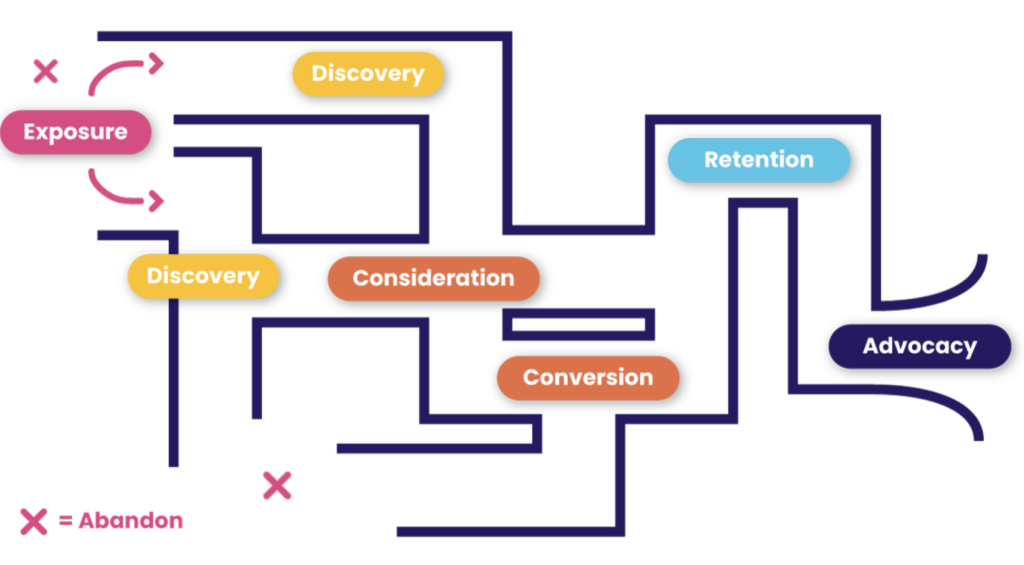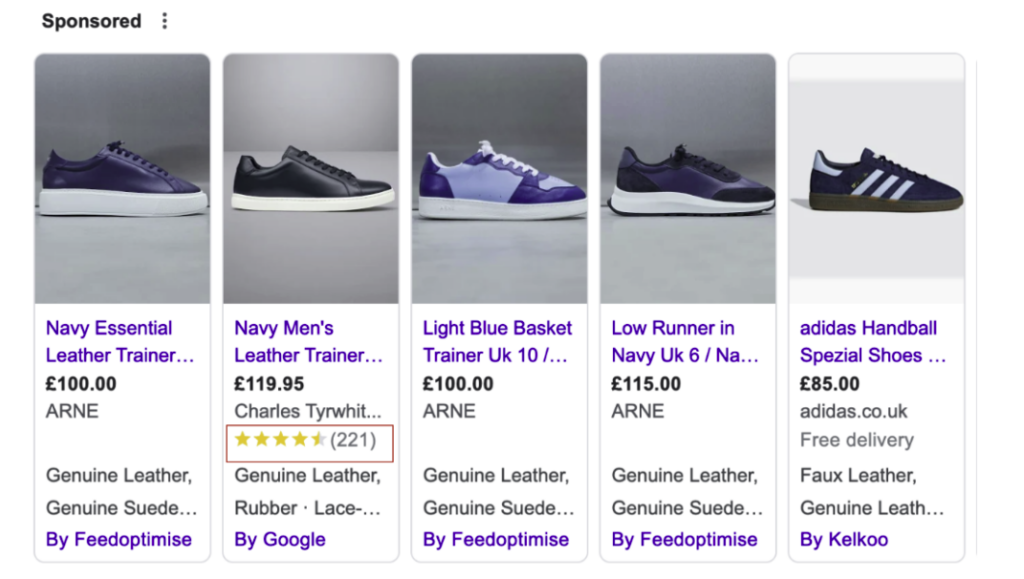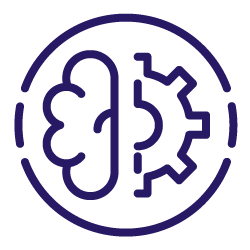Traditionally, we think about the customer funnel in a very linear way: there’s a phase for discovery, where users first interact with us; one for consideration, where they evaluate our offer; then they proceed down the other crucial steps of purchase and retention, where they decide to commit and finally come back for more.
However, when we are talking about humans, decision making is anything but linear: users discover sites and products through different channels, conduct research about us, abandon us, and potentially start over via a different route.
And while a new conversion is always a great outcome, it’s not necessarily where the journey ends. Retention is the next level metric on which every team now has some influence, SEOs included.
As marketers, we are always prompted to think about the different factors that affect the journey: Is the messaging compelling? Is the navigation clear? Are we providing customers enough reasons to come back to us over and over?
Here, we go one step deeper and analyze some of the cognitive biases that drive and affect our decision making from when the user first learns about our brand, to when they become loyal customers.
What are cognitive biases?
Cognitive biases are systematic errors in processing, remembering and acting upon the information with which we are presented. It’s a manifestation of our inability to be completely objective as humans, since we all have different experiences, natural preferences and mental schemes that are factored in as part of the input when we receive information.
A number of cognitive biases have been isolated and studied (more than 150!), some of which we might be traditionally more familiar with.
Having such an impact on information processing, cognitive biases can naturally affect the way we judge situations and make decisions too.
Examples of cognitive biases in real life
Do you ever feel like some of your decisions are almost automatic? For example, taking a certain commute to work, or choosing one brand of cereal over another.
This is a common example of familiarity bias, a natural tendency to stick to what we know because it saves us the time and resources to evaluate all the other unfamiliar options.
This is a great deal for our brain, which is constantly making executive decisions in a sea of possibilities. Our cognitive resources are limited and cannot possibly process and evaluate every aspect and potential outcome of a choice, so we often rely on biases and heuristics, which can make it easier and faster for us.
While cognitive biases are processing and judgment inaccuracies, heuristics are rules of thumb, or mental shortcuts, that we use in order to make a decision, especially when the time is limited. To an extent, heuristics can lead to biases (as we’ve seen for familiarity-led decisions) as they narrow the lane of stimuli we have to process while forming a judgment.
What part of the customer journey do biases affect?
Every part. That’s because as humans interacting with the outside world, we are constantly making decisions – even when we are not aware of it.
We decide what to pay attention to among a lot of stimuli that are all targeting us at the same time, and we decide what to act on and what to ignore. That’s by means of a process called selective attention, which is certainly determined by internal motivations in some cases, but can often be modulated by our own pre-existing cognitive schemes and biases.
This means that, one way or the other, we are always subject to errors in judgment, determined by our previous experiences, our mental associations and our existing beliefs.
But let’s try to go in order. In a traditional funnel, the first step is always the discovery phase leading to brand awareness – and if we were in a labyrinth, that would be what leads us to the entrance or our first touchpoint.
The way we discover products, services and brands is now more diverse than ever. This can include organic search, paid search, social media and professional networks to name a few. All of these methods often rely on things like compelling visuals, relatable messaging and social proof, among other things.
At this point, users are already subject to cognitive bias, because they are likely to relate and respond to one specific type of messaging more than the others, and consequently proceed down one funnel while disregarding the other options.
Below are some of the biases that we can experience, as humans, in a traditional user journey through the digital environment.

Awareness stage: Salience over noise
Imagine the SERPs, where a sea of results comes up when you input a query. But now that search is evolving and expanding to different mediums, the amount of choice and stimuli we come face to face with is quite substantial. Not only is there more information to digest and evaluate, but also add to that the fact that our attention spans are getting shorter.
As a result, we often experience cognitive – and choice – overload. This is a stage already impacted by cognitive biases as we are motivated to reduce the number of options to evaluate based on where our attention ends up.
The salience effect
The salience effect is when we select something based on how prominent it is in an array of options.
Most times, the decision to click on an ad or on a search result only takes a few seconds. We don’t allocate the same amount of research or consideration to the phase where we are just beginning the search process as we would to one further down the funnel.
So, what is it that leads us to click on something?
A lot of the time, it will be the relevancy to our query that captures our attention. However, when all results are relevant, we rely on other properties that can shorten our journey to click on only one, like the presence of social proof, or the mere perceptual features of the results.
If something stands out from the ‘noise’, it will get noticed; this is also known as the isolation effect or the Von Restorff effect.
Emojis, different colors, bold text and anything that isn’t uniform with the rest of the results (even messaging) are shown to elicit distinctive brain activation patterns which lead to attentional shifts largely based on the violation of expectancy.
It’s like highlighting a cell in yellow when we analyze data. It enables us to find it straight away when we next open the document.

The star rating instantly helps one product stand out from the rest
However, if everyone is using such tactics to attract the user’s attention, then you’ll have to dig deeper to find what it is that could distinguish your brand from the rest of the crowd.
Consideration stage: The importance of placement and format
As users, when we land on a page with the intention of conducting some research, we likely won’t appreciate or absorb all the content on it. We’ll likely skim through it and react to some of the aspects that are important to us.
While traditional search and marketing has taught us to be wordy and cover all aspects of a topic, this might result in cognitive overload for a user. The user may be relatively invested in their search, but not to the point that they are ready to read all the details about a specific product offering.
Here are some of the biases that might come into play at this stage.
The serial position effect: The power of primacy and recency
The serial position effect is a bias that affects information processing and retrieval and has been shown to consist of two sub-effects: primacy and recency.
When presented with a list of items, we tend to remember the ones at the beginning (primacy) and the end (recency) better. This bias has been shown to affect persuasion as well, with arguments that are presented first and last having a more lasting impression.
This bias plays a crucial role in content consumption as well. For marketing, it stresses the importance of placing key information at the top and bottom of a page or of an ad. We should aim at beginning our content with your most important value propositions and wrap up with a compelling call to action (CTA).
And while it’s hard to isolate if the serial position effect is specifically something that affects rankings, especially in the everchanging search landscape we face today, it still opens the door to exciting possibilities for SEO testing.
However, the serial position effect isn’t only useful for content placement tests. It also informs us on how we can organize and order important elements on the page in a way that is easier for prospective customers to process and act on.
As a matter of fact, primacy is at the base of another bias called anchoring, which is when we use only one piece of information – usually the first one we encounter – as a baseline to evaluate all other options.
For instance, on e-commerce category pages, if the first product listed is the most expensive, users may anchor their expectations to that price and subsequently choose an option that seems cheaper in comparison to other products, but might still exceed their initial budget.
The compromise effect, a complementary bias, comes into play when individuals tend to avoid extremes and opt for a middle-ground choice.
The anchoring and compromise effects suggest that the order in which products or options are presented can significantly influence purchasing decisions. This implies that as marketers, we are “choice architects” and we have the power to make the customer journey simpler by reorganizing page items.
[Ebook] 5 KPIs that reveal top strategies for successful ecommerce SEO
Numerical biases: Navigating price evaluations
At the stage of consideration, evaluating prices can also be subject to cognitive biases.
Two in particular have been isolated and studied in depth in relation to numerical comparisons: the distance and the size effects.
- The distance effect states that given two numbers, it’s easier to judge which one is larger when the gap between them is bigger. For example, we are faster and more accurate in estimating which number is larger between 12 and 27 as opposed to between 34 and 37.
- The size effect is when we are systematically faster and more accurate at judging small numbers rather than large numbers.In this case, we are faster at judging differences between 5 and 9 than 234 and 238.
Both distance and size effects imply that smaller numbers are easier and faster to process, making percentages or fractions an effective way to convey savings as compared to integers.
For example, the phrase “Save 34%” is faster to appreciate than “Save £581” when dealing with a €1700 laptop.
Due to this, a strategy that’s often used in advertising is to show the bigger numbers to give the impression of larger savings. However, this tactic can sometimes backfire if users feel deceived. It’s a fine line to walk and brands should not underestimate the impact of these techniques on user trust and long-term relationships.
Purchase stage: We react to what we fear and to what we believe
The negativity bias: When a bad experience speaks louder than a good one
The purchase stage is a delicate one. This is when a user, who has already dedicated time and effort to peruse your content and evaluate your offers, decides if they want to make a commitment and invest more of their resources into your brand or products.
A 2023 study from Bayard showed that this is the stage that can be cut short by a number of negative factors: insufficient information, broken pages, overwhelming flow and much more. Why is that?
Because we tend to weigh and remember negative experiences more vividly than positive ones. As humans, we developed an “over-attention” to the negative side of things as an adaptive strategy in response to threatening stimuli, and it’s so hardwired in our brain that it is quite difficult to overcome without conscious effort.
This is a bias that is well known and has been exploited by the media. The proof: negative headlines tend to have higher CTRs than positive or neutral ones.
However, its impact doesn’t stop at the initial stages of the customer journey. We see from the study above that it can affect purchase and retention. If a prospective customer encounters a problem or a negative experience on your website, it’s likely to overshadow all the positive aspects and prevent them not only from converting in that one journey, but also from considering your brand as an option over the course of their next search.
This emphasizes the need for teams to work in sync towards a flawless user experience and continuous improvement. Therefore, the time and trust that the user has put into the evaluation of your services or products don’t go to waste.
Trust can be challenging to earn but very easy to lose.
The confirmation bias: Reinforcing existing beliefs
The confirmation bias is another one that can affect numerous stages of the journey at the same time. It is when we tend to favor information that confirms our beliefs, rather than exploring different perspectives. It’s an insidious one, because by only taking in information that fits our own reality, it can create echo chambers and reinforce unidimensional thought patterns.
This doesn’t apply only to information processing, but it also affects perception and taste preferences. A 2017 study by Plassmann and colleagues found that when bottles of wine were misleadingly labeled as more expensive, participants reported that they tasted better, and this preference was encoded at the neural level (even though, in reality, they were drinking the cheapest option out of the ones presented).
The confirmation bias can be reflected in the way we formulate our queries; e.g. “Why is Pepsi better than Coca-Cola?” as opposed to the other way around. This definitely has an impact on what we end up clicking, so it stresses the importance of in-depth intent research.
Often, marketers will focus on transactional queries and will overlook informational ones that can help understand users’ perceptions of the brand and the points of friction they might encounter.
If a brand doesn’t rank well for queries related to payment or shipping, for example, users may rely on other sources that might not have the most accurate information on those topics. They, however, represent the “next best option” in the absence of authoritative and first-hand information.
The existing beliefs and motivations leading the user to that search – e.g. “I don’t trust this brand because I cannot see shipping times”, will influence their decision to click on alternative results and to proceed on the journey or not.
To build trust and authority, brands should proactively address user concerns, whether they are related to reliability or to other aspects of their interaction.
Retention and advocacy stages: A genuine connection is (almost) all you need
The familiarity bias
When we make a customer happy, they’ll likely choose us over someone else with a similar offer. Think about it: do you prefer to order at your local takeaway, or do you always try something different? Do you have brands you always go to, even if they are not consistently the cheapest on offer?
If you said yes, that is an example of familiarity bias, our natural tendency to favor something we know versus the unknown. As consumers, this is something that we turn to constantly, because it allows us to slim down our endless possibilities and save our cognitive resources.
But familiarity is not only tied to sparing cognitive resources, it has deeper roots. Psychophysiology studies have demonstrated that familiar stimuli elicit a skin conductance response, a manifestation of psychological arousal. It means that the familiar bond goes deeper than we ever imagined because it taps into the emotional world and the affective responses of the consumer.
In a world full of choices and experiences, prospective customers still want to feel like they’re making a good one, and the automatic, ‘gut’ reaction they get from a familiar option is exactly what creates the feeling of safety they need to convert, come back and recommend you to other people.
At the end of the day, we remember experiences for how they made us feel more than their factual content.
It may mean that we feel more comfortable with brands that are based in our country, or display pricing in our currency, or use the same cultural references. In other ways, we prefer what feels relatable, because we click with people, feelings and aspirations rather than brands themselves. So, it’s important not to overlook localization efforts as they can be a goldmine for familiarity-based decisions.
Takeaways
As we know, the customer journey can be very far from linear, but these are 5 steps that you can take today to facilitate them:
- Test and optimize content placement: Place essential information and value propositions strategically at the top and bottom of your content, and test with heat maps where you can.
- Price strategies: Use percentages and fractions (e.g., “50% off” or “1/2 price”) to convey savings more effectively rather than relying on deceptive tricks.
- UX and CX optimization: Work cross-functionally to ensure a seamless user experience throughout the customer journey to prevent negativity bias and abandonment. Proactively address informational queries, even if they don’t directly lead to immediate sales. Building trust with prospective customers is crucial.
- Invest in (real) localization: Implement full localization efforts across international websites. Ensure you convey your local presence clearly.
- Trust and transparency: At every stage, make sure your information is transparent, and your messaging conveys trustworthiness.


